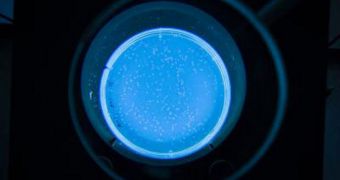A study that began several years ago now finally demonstrated how a species of bacteria called Escherichia coli (E. coli) was able to evolve the ability to consume a type of food it previously could not digest.
The work started when investigators based at the Michigan State University (MSU) announced that some of the E. coli bacteria they had been growing in a culture for quite some time began consuming the compound citrate in small dosages.
This would not constitute groundbreaking news on many televisions, until people learn that E. coli cannot consume citrate in an environment that contains oxygen. Yet, oblivious to the memo, these bacteria did so.
Researchers therefore speculated that they were witnessing the evolution of a new skill, an adaptation to the environment that would enable the microorganisms to survive, and develop even further. Usually, E. coli are more than satisfied if they can nib on some glucose.
Perplexed by the results, the MSU investigators analyzed the genetic origins of the newly emerging trait, and found that several mutations in key genes are required for the adaptation to become stable. Evolutionary biologists say that mutations such as switching to a new food source emerge very rarely.
In a new study the team published this week – in the top scientific journal Nature – the researchers document the step-by-step process that led to the new trait. They also describe the new patterns of gene regulation seen in the modified E. coli populations.
The study was supported by the US National Science Foundation (NSF) Division of Environmental Biology, and the BEACON Center for the Study of Evolution in Action, which is itself funded by the NSF.
“These bacteria have evolved to consume a food resource – citrate – that no wild E. coli uses. Three mutations are required for this to happen, and they must occur in a specific order,” BEACON Center NSF program manager, George Gilchrist, explains.
“This study shows that the first mutation is required to set the stage for the next two, but surprisingly, this turns out to occur repeatedly and independently in different populations. What this suggests is that complex traits, at least in the microbial world, can evolve quickly and repeatedly,” he concludes.

 14 DAY TRIAL //
14 DAY TRIAL //